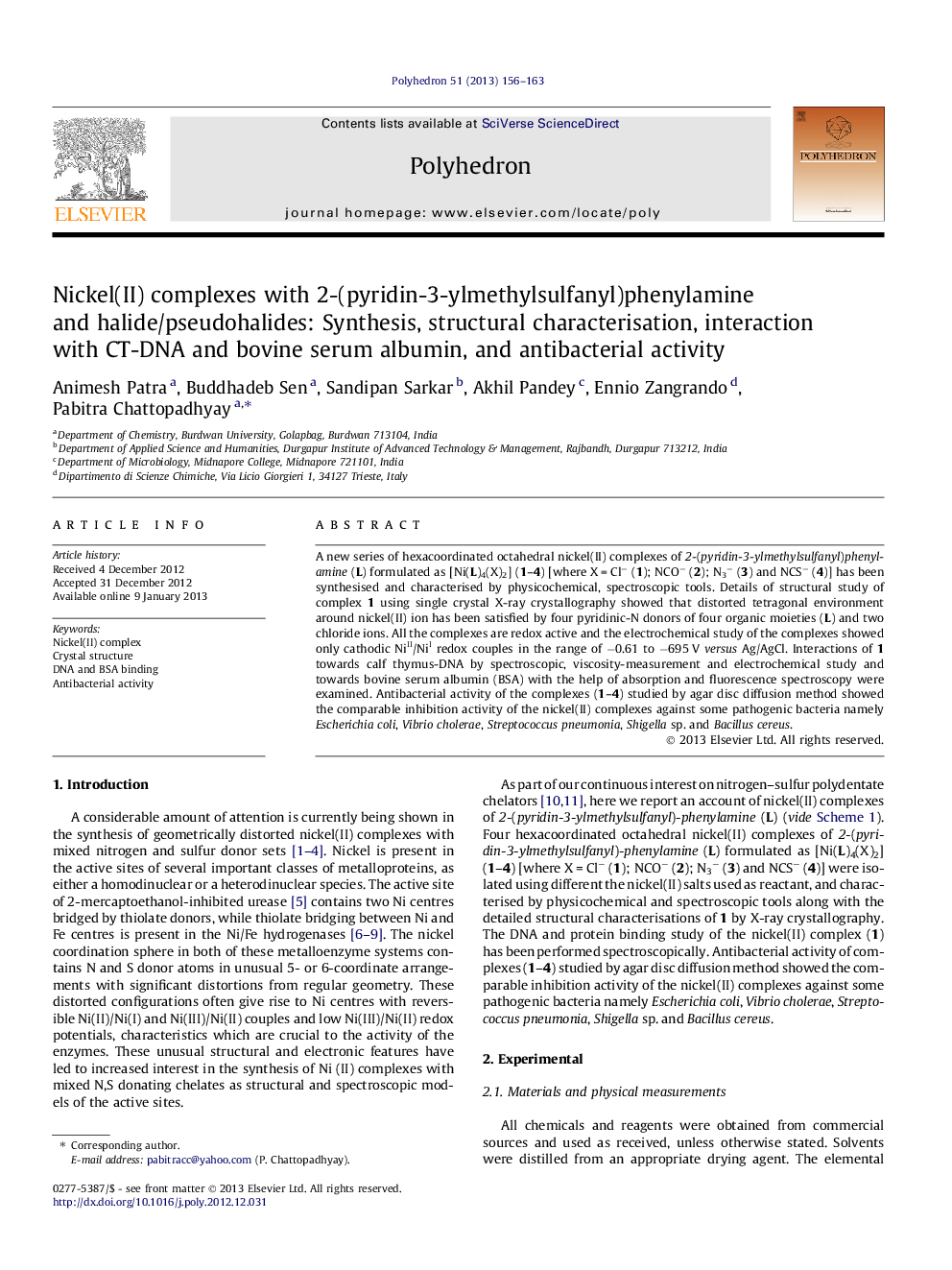| کد مقاله | کد نشریه | سال انتشار | مقاله انگلیسی | نسخه تمام متن |
|---|---|---|---|---|
| 1337160 | 1500288 | 2013 | 8 صفحه PDF | دانلود رایگان |

A new series of hexacoordinated octahedral nickel(II) complexes of 2-(pyridin-3-ylmethylsulfanyl)phenylamine (L) formulated as [Ni(L)4(X)2] (1–4) [where X = Cl− (1); NCO− (2); N3− (3) and NCS− (4)] has been synthesised and characterised by physicochemical, spectroscopic tools. Details of structural study of complex 1 using single crystal X-ray crystallography showed that distorted tetragonal environment around nickel(II) ion has been satisfied by four pyridinic-N donors of four organic moieties (L) and two chloride ions. All the complexes are redox active and the electrochemical study of the complexes showed only cathodic NiII/NiI redox couples in the range of −0.61 to −695 V versus Ag/AgCl. Interactions of 1 towards calf thymus-DNA by spectroscopic, viscosity-measurement and electrochemical study and towards bovine serum albumin (BSA) with the help of absorption and fluorescence spectroscopy were examined. Antibacterial activity of the complexes (1–4) studied by agar disc diffusion method showed the comparable inhibition activity of the nickel(II) complexes against some pathogenic bacteria namely Escherichia coli, Vibrio cholerae, Streptococcus pneumonia, Shigella sp. and Bacillus cereus.
On reaction of 2-(pyridin-3-ylmethylsulfanyl)phenylamine (L) with nickel(II) salt, a new series of hexacoordinated nickel(II) complexes of 2-(pyridin-3-ylmethylsulfanyl)phenylamine (L) formulated as [Ni(L)4(X)2] (1–4) [where X = Cl− (1); NCO− (2); N3− (3) and NCS− (4)] was isolated and characterised by spectroscopic and electrochemical techniques along with the detailed structural characterisation of complex 1 by single crystal X-ray diffraction. The spectroscopic study of interaction of 1 with CT-DNA showed the groove binding mode of complex 1 and it is also in accordance with the unchanged values of the viscosity of the DNA solution upon addition of complex 1. The formation of a ground state BSA–[Ni(L)4Cl2] complex has been explored with the help of spectroscopic tools. All four nickel(II) complexes have higher antibacterial activity than ligand L against five pathogenic bacteria (Escherichia coli, Vibrio cholerae, Streptococcus pneumonia, Shigella sp. and Bacillus cereus).Figure optionsDownload as PowerPoint slide
Journal: Polyhedron - Volume 51, 4 March 2013, Pages 156–163